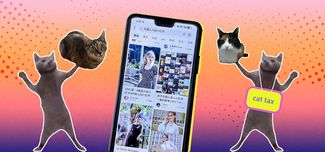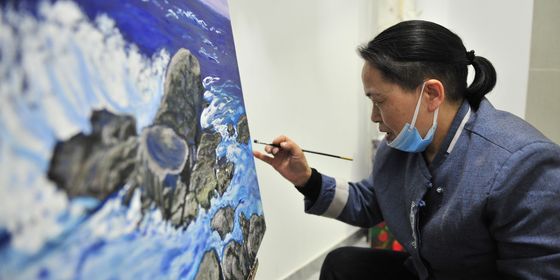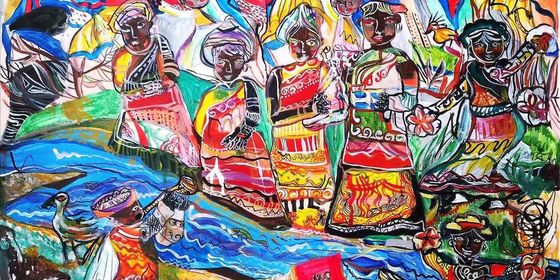A brief interview with talented artist Liu Bolin
 How can a person disappear and seemingly become one dimensional? The subtle “Invisible Man” (隐形人 Yǐnxíng rén) artworks of 40-year-old Liu Bolin (刘勃麟) reveal the secret. Liu quietly stands as a blank canvas, preparing to fade into the background. He resembles a sniper, taut, alert, yet hiding from his prey. His assistants slowly, assiduously paint him to perfectly merge into the background; he disappears. His artworks mingle painting, performance, and photography. By making himself invisible, he queries what is seen and what isn’t, what is real and what is not. It creates a curious, discombobulating effect, all too easy for the uninitiated viewer to not see the art at all.
How can a person disappear and seemingly become one dimensional? The subtle “Invisible Man” (隐形人 Yǐnxíng rén) artworks of 40-year-old Liu Bolin (刘勃麟) reveal the secret. Liu quietly stands as a blank canvas, preparing to fade into the background. He resembles a sniper, taut, alert, yet hiding from his prey. His assistants slowly, assiduously paint him to perfectly merge into the background; he disappears. His artworks mingle painting, performance, and photography. By making himself invisible, he queries what is seen and what isn’t, what is real and what is not. It creates a curious, discombobulating effect, all too easy for the uninitiated viewer to not see the art at all.
What was the creative inspiration for your famous series “Hiding in the City”?
In 2005, the Suojia Village International Art Camp where I worked was forcibly demolished by the local government. I created this series to express my protest and also to attract more people to pay attention to the living conditions of artists and their creative freedom. As our society relentlessly develops, questions keep arising that ultimately pose a kind of infringement on the human beings; this series is a way for me to rethink some of these problems.
What scenes do you like to select as the background to your work?
I like to select scenes that deserve to be summarized in our living memory. Take my work “Xiagang 706” as an example: 706 is a deserted factory in the 798 Art district in Beijing. Xiagang (下岗, literally, leaving post), is a euphemism for being laid off and refers to the people who lost their jobs during the transition from a planned economy to a market economy. I made six xiagang workers invisible in the deserted factory where they had lived and worked all their lives. On the wall behind is a slogan of the Cultural Revolution: “The core force that leads us careering forward is the Chinese Community Party.” The relationship between the background and invisible workers forces me reflect upon society as a whole.
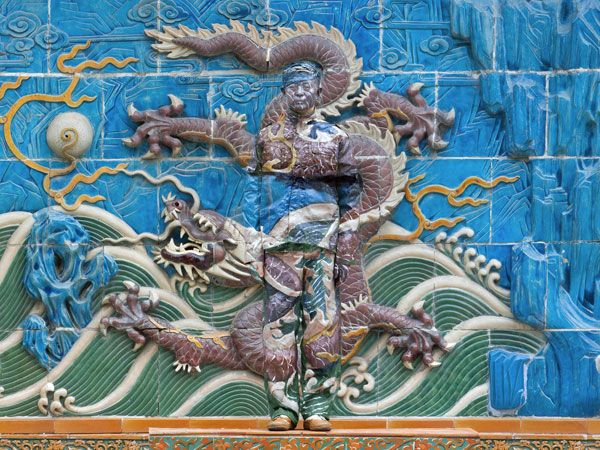
Nine Dragons screen, 2010
What are your thoughts on art?
Art is about the relationship between society and the human being; ultimately it is about exploring humanity. In my opinion, the artist’s attitude is very important. An artwork sets out to touch someone; it must be the result of not just technique, but also the artist’s thinking and his struggle in life. And the repeated struggles in life will continue to create art, no matter what the form.

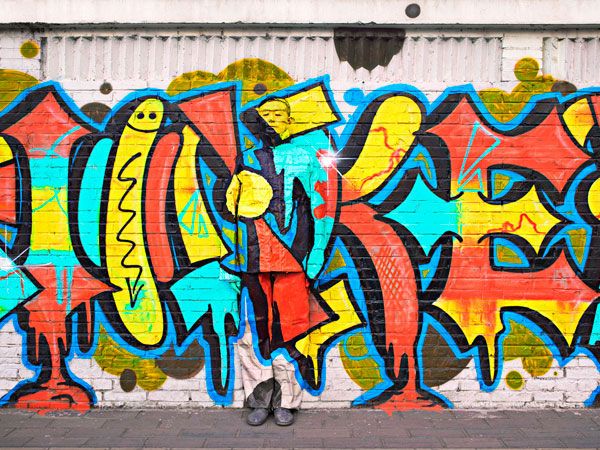

The slogan on the wall reads: “The core force that leads us careering forward is the Chinese Community Party.”


You can see more of his works here.



